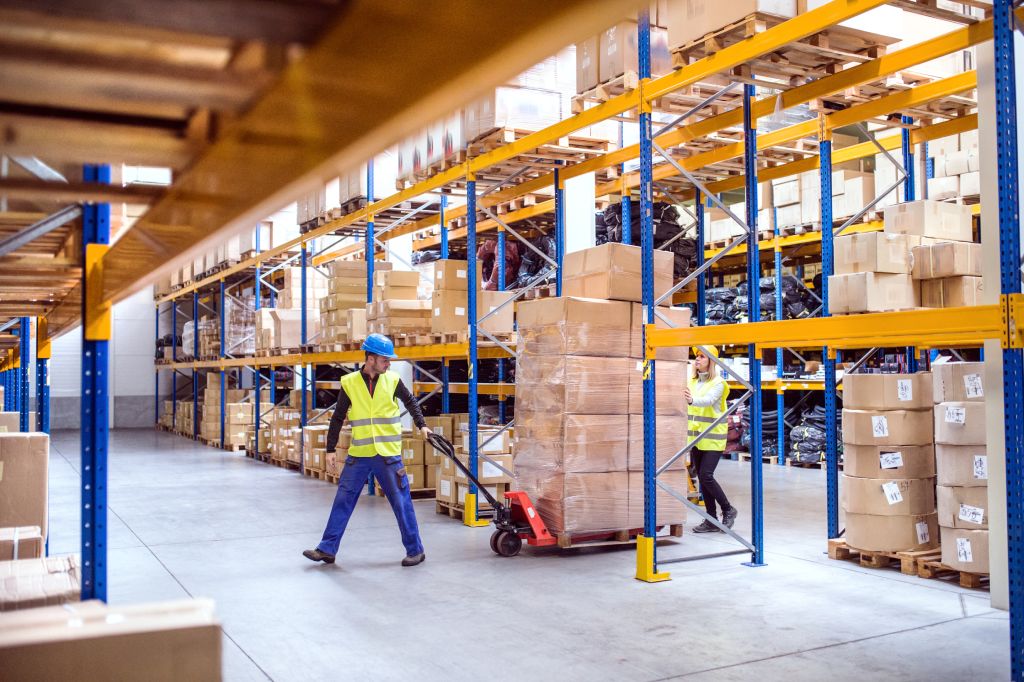
Working in a warehouse environment poses unique safety challenges. With heavy machinery, tall racks, dangerous tools, and hazardous materials, warehouses need safety-focused policies and procedures to protect workers. While the definition of “safety” took on a much broader meaning at the start of the pandemic and led to many precautions that are no longer as critical as they were, it did help jump-start conversations on the broader role and need for a more structured and deliberate approach to safety enforcement.
Here are some essential safety tips for warehouse workers.
What Makes a Safer Warehouse?
A safe warehouse has strong safety rules and procedures reinforced by management and followed by all staff.
This includes proper work training, ongoing training, and having standard operating procedures in place to prevent issues from arising.
Top 10 Warehouse Safety Tips
Here are ten of the most necessary warehouse safety tips:
1. Always Wear Proper PPE
Workers should use steel-toe boots, gloves, hard hats, reflective vests and other personal protective equipment (PPE) appropriate for their roles to prevent various workplace accidents and injuries involving objects, equipment and vehicles.
2. Follow Proper Bending and Lifting Techniques
Using the legs instead of the back when lifting prevents strained muscles and injuries. Get close to items when lifting without twisting for optimal leverage and balance. Know your physical limits and use dollies, lifts and other tools to move especially heavy items. Finally, ask yourself if your equipment and tools are designed with ergonomics in mind, which could also be a factor in fatigue and injuries (see more on Ergonomic Considerations here)
3. Don’t Overload Equipment
Forklifts, ladders, scaffolds, shelves and conveyor belts all have defined weight limits. Exceeding capacities heightens collapse, falling items and other safety risks. Refer to load ratings before use.
4. Store Items Correctly
Place heavy objects on lower shelves. Never pile stock in an unstable manner. Secure racks, cages and shelves to the floor to prevent dangerous tipping during seismic activity. Maintaining an organized warehouse that promotes safety starts with the design and layout process. How you organize your space will also contribute to the safety of your workers.
5. Report Hazards Right Away
Look out for oil spills, damaged tools or equipment, unstable stacks of goods, unsafe electrical wires and other warehouse hazards. Alerting supervisors allows for quick resolution before accidents occur.
6. Clean Up After Yourself
Promptly clean slippery liquid spills. Keep aisles, walkways and exit routes obstacle-free in case quick evacuation becomes necessary. Always return tools and supplies to designated storage areas after use.
7. Drive Carefully
Stay alert when using forklifts, safely navigating turns and sound horns at intersections. Follow all posted warehouse traffic signs and lanes. Drive slowly when operating lift trucks in tight spaces or around people.
8. Lockout / Tagout
De-energize and lockout conveyor belts, compactors, balers and other warehouse equipment before clearing jams, maintenance or adjustments. This prevents accidental startup while working.
9. Practice Good Housekeeping
Did you know that cleaner warehouses measurably outperform cluttered ones? A clean, well-organized warehouse sets the foundation for safety by allowing unobstructed equipment operation and evacuation.
10. Understand How to Handle Hazardous Materials
Follow strict procedures outlined in safety data sheets when dealing with flammable materials, corrosives, poisons or other hazards. Even if your facility does not work with chemicals or other hazardous materials, everyday items like motors and Sealed Lead Acid Batteries can cause spills of oil products and acids.
Final Thoughts
While warehouses face many safety challenges, companies can protect their staff by ensuring cleanliness, organization, equipment integrity, proper training and adhering to robust safety policies as these tips outline. Reinforcing a culture of safety-first thinking keeps warehouse accidents dramatically lower.
Contact us at Newcastle Systems to learn more about how our technology helps create a safer work environment.